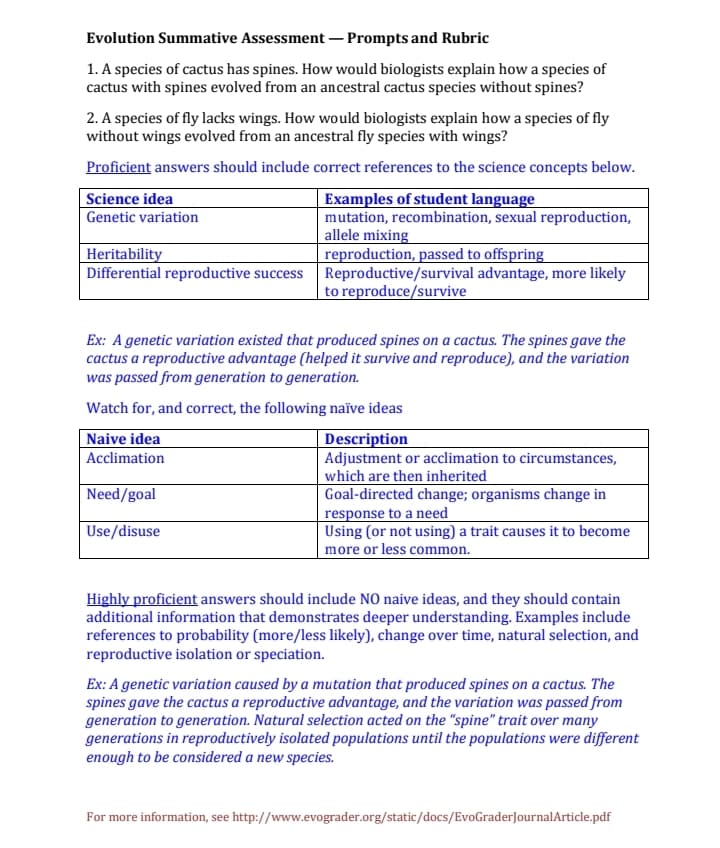1. A species of cactus has spines. How would biologists explain how a species of cactus with spines evolved from an ancestral cactus species without spines? 2. A species of fly lacks wings. How would biologists explain how a species of fly without wings evolved from an ancestral fly species with wings? Proficient answers should include correct references to the science concents below
1. A species of cactus has spines. How would biologists explain how a species of cactus with spines evolved from an ancestral cactus species without spines? 2. A species of fly lacks wings. How would biologists explain how a species of fly without wings evolved from an ancestral fly species with wings? Proficient answers should include correct references to the science concents below
Biology (MindTap Course List)
11th Edition
ISBN:9781337392938
Author:Eldra Solomon, Charles Martin, Diana W. Martin, Linda R. Berg
Publisher:Eldra Solomon, Charles Martin, Diana W. Martin, Linda R. Berg
Chapter23: Understanding Diversity: Systematics
Section: Chapter Questions
Problem 12TYU
Related questions
Question

Transcribed Image Text:Evolution Summative Assessment – Prompts and Rubric
1. A species of cactus has spines. How would biologists explain how a species of
cactus with spines evolved from an ancestral cactus species without spines?
2. A species of fly lacks wings. How would biologists explain how a species of fly
without wings evolved from an ancestral fly species with wings?
Proficient answers should include correct references to the science concepts below.
Science idea
Genetic variation
Examples of student language
mutation, recombination, sexual reproduction,
allele mixing
reproduction, passed to offspring
| Heritability
Differential reproductive success Reproductive/survival advantage, more likely
to reproduce/survive
Ex: A genetic variation existed that produced spines on a cactus. The spines gave the
cactus a reproductive advantage (helped it survive and reproduce), and the variation
was passed from generation to generation.
Watch for, and correct, the following naïve ideas
Naive idea
Description
Adjustment or acclimation to circumstances,
which are then inherited
Goal-directed change; organisms change in
response to a need
Using (or not using) a trait causes it to become
more or less common.
Acclimation
Need/goal
Use/disuse
Highly proficient answers should include NO naive ideas, and they should contain
additional information that demonstrates deeper understanding. Examples include
references to probability (more/less likely), change over time, natural selection, and
reproductive isolation or speciation.
Ex: A genetic variation caused by a mutation that produced spines on a cactus. The
spines gave the cactus a reproductive advantage, and the variation was passed from
generation to generation. Natural selection acted on the "spine" trait over many
generations in reproductively isolated populations until the populations were different
enough to be considered a new species.
For more information, see http://www.evograder.org/static/docs/EvoGraderJournalArticle.pdf
Expert Solution
This question has been solved!
Explore an expertly crafted, step-by-step solution for a thorough understanding of key concepts.
This is a popular solution!
Trending now
This is a popular solution!
Step by step
Solved in 3 steps

Knowledge Booster
Learn more about
Need a deep-dive on the concept behind this application? Look no further. Learn more about this topic, biology and related others by exploring similar questions and additional content below.Recommended textbooks for you

Biology (MindTap Course List)
Biology
ISBN:
9781337392938
Author:
Eldra Solomon, Charles Martin, Diana W. Martin, Linda R. Berg
Publisher:
Cengage Learning

Biology Today and Tomorrow without Physiology (Mi…
Biology
ISBN:
9781305117396
Author:
Cecie Starr, Christine Evers, Lisa Starr
Publisher:
Cengage Learning

Biology (MindTap Course List)
Biology
ISBN:
9781337392938
Author:
Eldra Solomon, Charles Martin, Diana W. Martin, Linda R. Berg
Publisher:
Cengage Learning

Biology Today and Tomorrow without Physiology (Mi…
Biology
ISBN:
9781305117396
Author:
Cecie Starr, Christine Evers, Lisa Starr
Publisher:
Cengage Learning